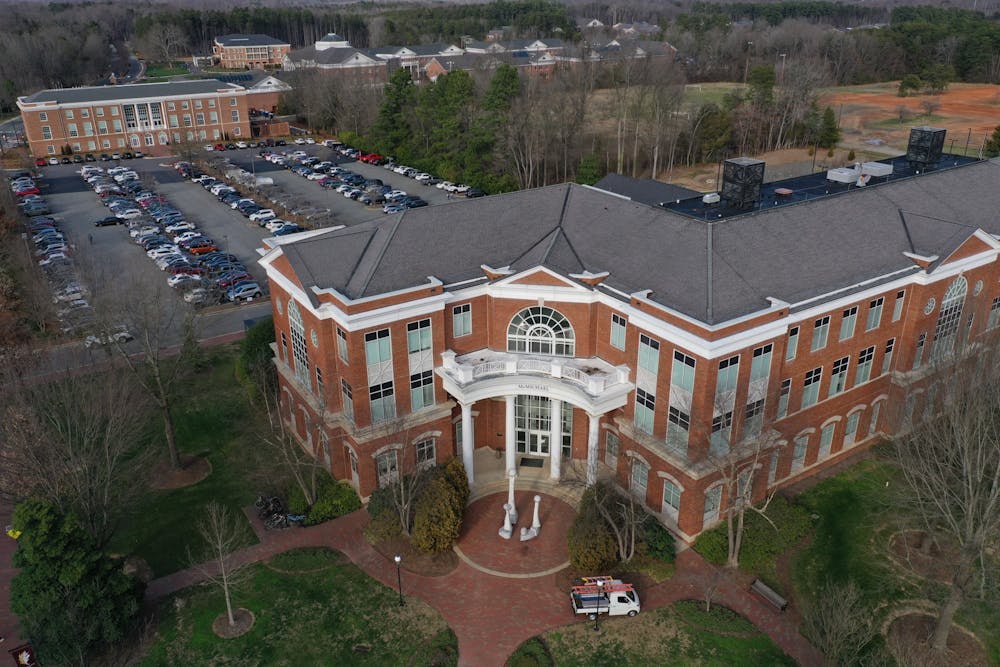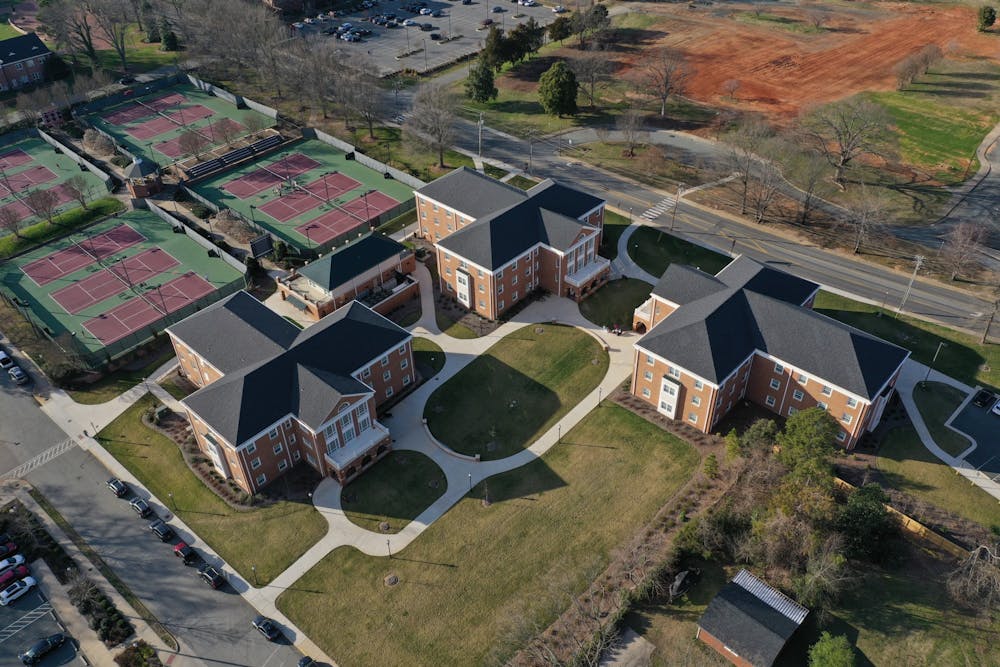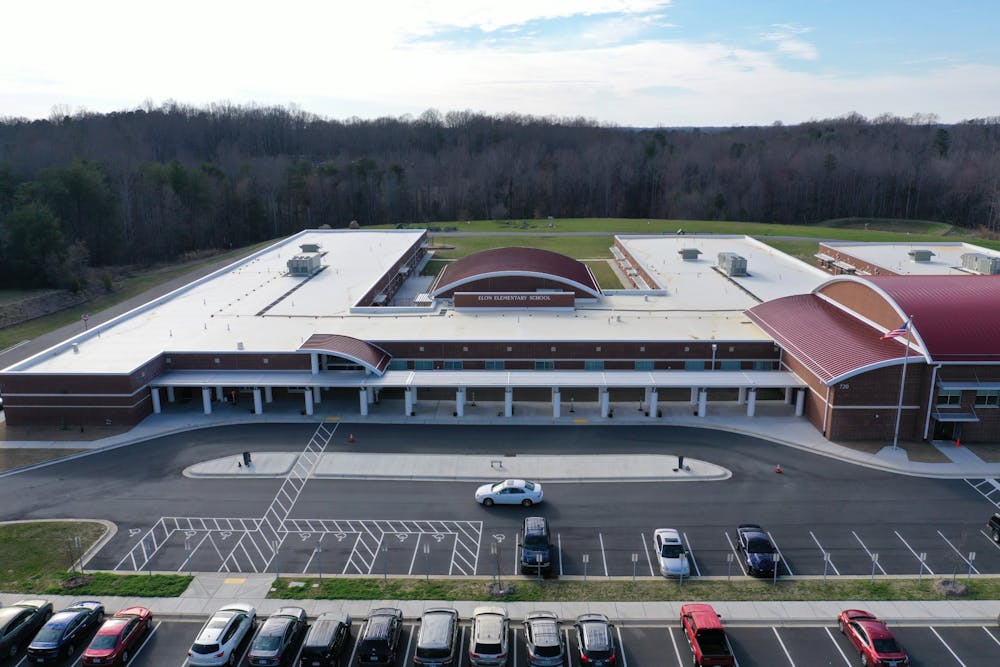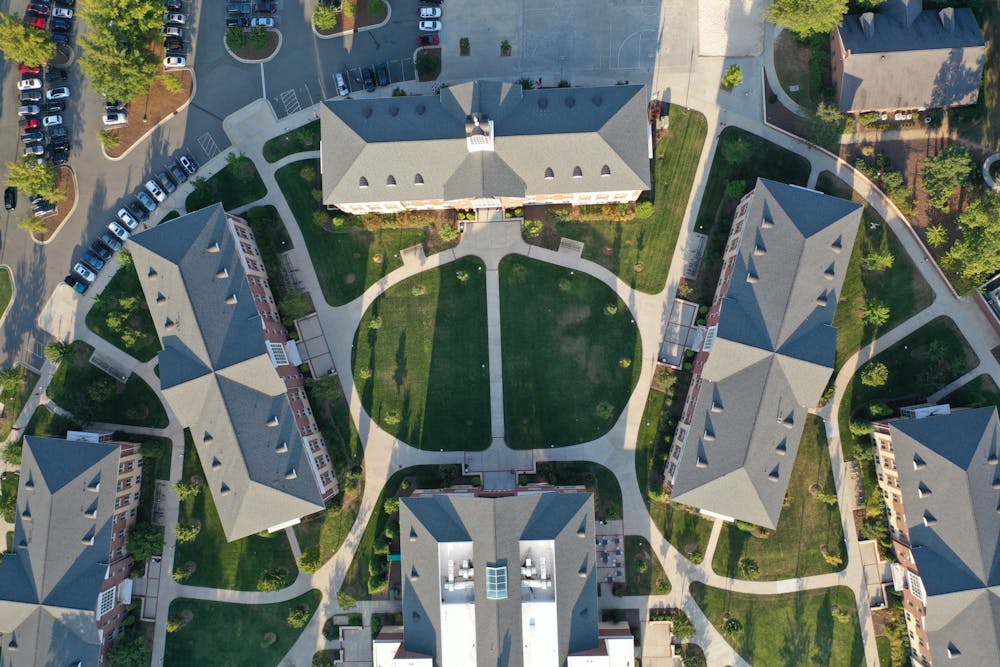After eighteen months of planning and contributions from thousands of Elon community members, Boldly Elon, the 2030 strategic plan, was formally released to the public on Feb. 11.
The strategic plan is used to guide Elon’s development and inform the community about what the university hopes to achieve in the next 10 years.
According to the previous strategic plan, titled The Elon Commitment, from 2010 to 2020 the plan aimed to affirm Elon’s place “among colleges and universities known for academic excellence and exceptional student achievement.”
The university’s fifth strategic plan intends to define Elon’s position as a top-100 national university in the next decade.
President Connie Book said that over the past 10 years, Elon has transformed in many ways, from doubling need-based financial aid, ensuring 100% access to study abroad and increasing the residential campus by 1,600 beds. Other notable additions include establishing the School of Health Sciences and the construction of Schar Center.
“In the late 1980’s, Elon College was ranked 39th in the Southern region with a 40% graduation rate,” Book said. “Through careful planning and wonderful teamwork, today we are a national university, ranked number 84 in the country and with a four-year graduation rate that ranks number 35 among national universities.”
The 2030 plan is comprised of four themes: thrive, rise, connect and learn. Jeff Stein, vice president for strategic communications, served as the co-chair of the new strategic plan. Stein said the most exciting part of the planning process was the inclusion of the entire Elon community.
“One aspect that was very reaffirming in this process is that the entire community said we need to double down on engaged learning and mentoring,” Stein said. “We need to stick with who we are and double our efforts to be a leader in engaged learning, to support the teaching and learning that we’re so good at and well known for. That really makes a difference.”
Thrive

Boldly Elon’s second theme, ‘Thrive,’ promises a campus-wide community in which every student, faculty and staff member can do just that, according to the strategic plan’s full text.
In creating ‘Thrive,’ the strategic planning committee combined the research of past initiatives like the 2015 Presidential Task Force on Social Climate and Out-of-Class Engagement and the Council on Wellness and Well-Being to create a holistic approach, ensuring every individual will experience a greater sense of belonging on Elon’s campus.
“Plans often build upon each other,” said Vice President for Student Life Jon Dooley. “What you see in the Boldly Elon Strategic Plan is absolutely a continuation of previous work.”
While the prior strategic plan, The Elon Commitment, focused little on community health and wellness, Boldly Elon indicates a desire for every member of the Elon community to achieve their full potential.
The plan includes the implementation of new policies and workshops that cover all aspects of well-being: emotional, physical, financial, social and spiritual. In implementing these campus wide projects, Elon hopes to serve as a national model for programs and research regarding student, faculty and staff wellness, according to the full text.
Boldy Elon envisions an increasingly diverse campus community that provides members of any race, ethnicity, religion, gender, sexual orientation and socioeconomic background with ample opportunities to succeed socially, academically and professionally.
Initiatives listed to achieve this vision include admissions benchmarks intended to strengthen the representation and retention rate of underrepresented groups as well as a proposed goal to double international enrollment. The plan marks an increased commitment to support offices on campus devoted to students of marginalized and underrepresented groups and their success. Specifically referenced are staffing increases across these offices.
The ‘Thrive’ theme also sees a number of major updates to campus infrastructure. According to the plan, renovations to the Koury Athletic Center will reimagine the recreational space as a community hub dedicated to physical and mental wellness. The Moseley Student Center will also be renovated in an effort to bring, according to the text, a “vibrant” energy to the heart of campus, though this was not elaborated on.
In addition to renovations, Dooley hopes that an increase in on-campus residency will further bolster the Elon community.
“When you think of the best universities in the United States as it relates to student success, graduation rates and retention rates, one feature that many of them share is that they are highly residential” he said.
Elon currently sees about 68% of students living in on-campus housing, but it is looking to raise that number to 80% by 2030. The administration hopes to achieve this through the renovation of existing residences and the addition of new dormitories. Although the location of these new residence halls has not been confirmed, they will have the capacity to house an additional 1,200 students.
In the coming years, Elon will also turn to more sustainable practices in the hope of becoming a carbon-neutral campus by 2037. These practices include investing in renewable energy sources, cutting campus energy consumption by 20% and continuing to construct green buildings certified by the Leadership in Energy and Environmental Design rating system.
Administration believes the transition to a more environmentally-conscious campus will teach students the importance of sustainability while benefiting the greater Elon community.
Boldy Elon finally cites the importance of maintaining exceptional faculty and staff, saying they are “driving forces” behind Elon.
“When you look for something like wellness and wellbeing or an inclusive community, those aren’t things that you can just achieve within a student body,” Dooley said. “The importance of focusing on faculty and staff is to create a community where everyone thrives.”
The ‘Thrive’ theme ends anticipating that, in the next 10 years, the university will continue to recruit and retain a diverse, adept and driven group of faculty and staff. By increasing compensation, advancing benefits and providing professional development opportunities, Boldly Elon hopes to foster a healthy work environment for faculty and staff. According to Dooley, this will in turn affect students.
“We want you to live and learn in an environment where students, faculty and staff are all promoting their own wellness. And that kind of a community, in turn, will have a positive impact on student learning and student success.”
Rise

According to Elon University’s new strategic plan, there will be a focus on increasing Elon’s admissions footprint. Additionally, the university plans to increase graduation and retention rates as well as expand and diversify recruitment.
With a graduation rate of 83.8%, Elon ranks 91 among private universities in the U.S. Specifically, the strategic plan set the goal of reaching 85% in the next four years and 90% in six years.
The strategic plan outlines how Elon will continue to provide merit and need-based aid.
Patrick Murphy, director of financial aid, said a certain amount of money is consistently awarded by the admissions office in the form of presidential scholarships, Elon engagement scholarships and various fellows program scholarships. Murphy said “a main thrust of the strategic plan is raising money for more scholarships.”
The Odyssey Scholars program, one of the programs addressed in the strategic plan, lends a financial hand to students in need. The Odyssey program is a part of the Center for Access and Success, and has a vision of assisting students who have financial limitations. Students selected for the program not only receive financial assistance, including study abroad and book stipends, but through the program scholars also build a strong network of peers and mentors who can assist them at Elon and beyond.
Ashley Billie, junior, said one of the things she has appreciated about the Odyssey program is the sense of community.
“Third floor Mooney… that’s our second home, for a lot of us,” Billie said.
Another aspect Billie has appreciated is financial empowerment workshops she has been able to attend through the program, because it is “not something a lot of the students had no prior knowledge about.”
Resume crafting, portfolio development, undergraduate research, service -learning and more are available through the Odyssey program.
“The next 10 years… there is going to be a heavy emphasis on fundraising for the endowments that feed those scholarships,” Murphy said.
According to Murphy, in 2009 Elon was able to provide aid to about 56 students. Currently there are 136 Odyssey Scholars. The strategic plan projects that the Odyssey Scholars program will increase to 400 students. From 2009 to 2020, the university has increased the amount of money dedicated to the Odyssey program. Scholarships for students range from $7,500 to $25,000, Murphy said, with financial aid “filling in all the other pieces, so they all end up [in] relatively the same place.”
“The money that is going to the 135 students is a little over $2.5 million,” Murphy said. “Whereas 10 years ago, we were spending about $940,000.”
Connect

An aerial view of the entrance of the Inn at Elon, taken in January 2020.
The ‘Connect’ section of Elon’s new strategic plan outlines developments for Elon alumni, sports and the town of Elon. ‘Connect’ introduces more staffing and programs for alumni professional development, prioritizes athletic success and creates new partnerships with the town of Elon.
“What we heard from alumni over the last few years and particularly in this process was that they wanted to come back to Elon,” Vice President for Strategic Initiatives Jeff Stein said. “Alumni were clear that they want further professional development and further professional networks.”
The biggest initiative in alumni development will be the creation of three Elon learning centers in Los Angeles, New York City and Washington D.C. These hubs will be accessible to alumni, current students and prospective students, although the exact details have not been decided yet.
“Hopefully they will combine some learning spaces, some collaborative working spaces, but create a central location where those activities can occur,” Stein said.
The strategic plan also addresses sports development, wanting to increase championship appearances and wins in the Colonial Athletic Association and the NCAA. According to Stein, the university will build new facilities and improve old ones, including new indoor spaces to allow athletes to practice regardless of weather conditions.
“We know that athletics is a great learning opportunity for students and we want to continue to stay focused leading there, on and off the court,” Stein said. “I think we recognize that the Phoenix spirit is something that transcends many communities all across the world.”
Stein said funding for the strategic plan will come from a combination of the annual budget and fundraising.
“At Elon, we align our annual institutional priorities and our annual budget with the strategic plan. One way we ensure that we focus on and complete the strategic plan is to build the annual budget around the priorities and initiatives of the strategic plan. There is no exact formula or percentage used,” Stein said.
Finally, the plan explores how Elon University and the town of Elon can collaborate and create better partnerships.
“These four themes really encapsulate where we want to go, partly being connecting with our local community, so that we’re not going to be an island of prosperity,” Stein said.
Emily Sharpe, a town of Elon alderwoman, said that the downtown area is a focus for improvement. Sharpe said she wants to increase retail space to encourage new businesses to move in.
“We have a lot of places, a lot of businesses, that would love to come into downtown Elon, but we don’t have anywhere to put them,” Sharpe said. “The retail space that is currently being used by the university could really be usable space for improving the downtown retail.”
The alderwoman said that the old Lighthouse bar property, black box theater and the church on Trollinger Avenue are being used by the university but have potential for retail development.
Sharpe said one of the issues with the current relationship between the town and the university has to do with services provided by the town of Elon to university students. She said the town’s limited budget is a concern when it has to provide for a large number of people.
“We have to support anywhere from 10,000 to 12,000 people, but we only have about 4,000 people who are in tax residence,” Sharpe said. The university is considered a nonprofit entity, meaning it is not a taxable property like other parts of the town.
With the number of students increasing each year, she said that the town struggles to keep up with the constant growth.
According to Sharpe, the university provides about $150,000 a year to the town – but the costs of services to the university are much higher.
“If you were to take every single call that our fire department reports to, a large percentage of those are tied to the university,” Sharpe said. “It’s a huge cost – it’s a lot more than $150,000 a year.”
Nevertheless, Sharpe said that because of the university, the town is able to keep businesses running. “The university certainly provides us with a lot of opportunity,” Sharpe said.
Learn

As part of Elon University’s new 2030 strategic plan, the ‘Learn’ theme introduces initiatives in science, technology, engineering and math programs across campus. The plan specifies a new School of Engineering as well as a new nursing program.
“In terms of engineering, nursing and S.T.E.M. in general, the programs that students today are looking for, tomorrow we will have,” said Jeff Stein, vice president for strategic initiatives, who served as the co-chair of the 2030 strategic plan.
The plan will include an “Innovation Quad.” This space will be the foundation for a new School of Engineering, as well as a multi-purposeful space that will include a garage-style door and heavy-duty power tools. According to President Connie Book, the university will organize a committee when it is time to decide which majors it wants to incorporate with the new school.
The ‘Learn’ theme of the plan also covers the growth of the planned nursing program within the established School of Health Sciences, which was introduced in the 2020 strategic plan. The strategic plan seeks to create opportunities for nursing students to choose between graduate and undergraduate programs.
“Last time we did a major construction ... project for S.T.E.M. was McMichael Science Center and that was 1998, so since then the majors in S.T.E.M. have increased by 300%,” Book said. “If you look at the outlook for employment, it is where the employment growth is.”
Book also said in the past, the community has expressed the need for more S.T.E.M. programs, which is something Elon made sure to incorporate in its new strategic plan.
The planning committee sees its School of Engineering as a way to compete with established engineering schools such as North Carolina State University. President Book said the challenge for this new school is that “Elon is starting an Engineering program 100 years later than NC State. The disadvantage is that if you want to interact with an alum, we don’t have any engineering alums.”
According to President Book, one advantage of Elon’s plan for the new engineering school is the focus on the future. She explains the university has plans to create much more future-oriented, innovative spaces than what other universities have to offer.
“We require all of our engineering students to take entrepreneurship and to study abroad. That’s a global thinker,” Book said


